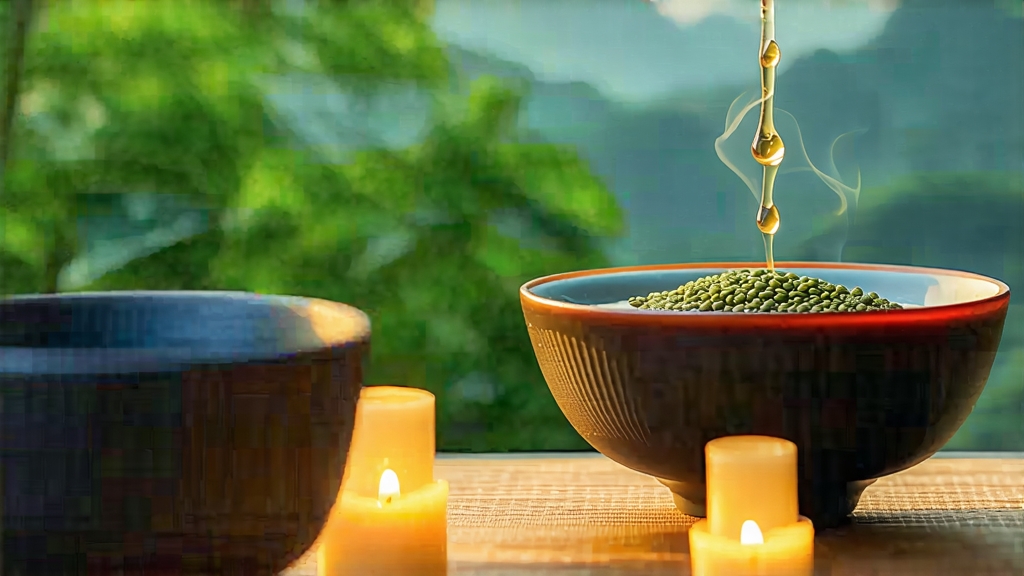
Ask any Chinese tea trader to name one oolong that can seduce both novices and lifelong connoisseurs, and the answer is almost always Tie Guan Yin—literally “Iron Goddess of Mercy.” Grown in the granite-studded hills of Anxi County, southern Fujian, this emerald-ribboned leaf has carried the aroma of orchids and the taste of mountain minerals across five continents, yet its soul remains anchored in a 300-year-old legend of devotion, accident, and relentless craftsmanship. This essay invites international drinkers to move beyond the supermarket teabag and meet the real Tie Guan Yin: a living dialogue between soil, weather, human hand, and the quiet patience of time.
Origin stories in China are rarely modest, but the tale of Tie Guan Yin is unusually tender. A poor farmer named Wei Yin, so the legend goes, tended a dilapidated shrine to Guan Yin, the Bodhisattva of Compassion. Every morning he swept the courtyard and lit a single stick of incense, asking only for the strength to help his neighbors. One night in 1725, the goddess appeared in a dream and guided him to a hidden shrub behind the temple whose leaves shimmered like iron yet smelled like spring flowers. Wei transplanted the bush into his field, processed the leaves with the same reverence he showed the shrine, and shared the tea with his village. The infusion was luminous, fragrant, and lingered on the tongue like a answered prayer; villagers soon called it Tie Guan Yin to honor both the iron-hard leaf and the merciful spirit that delivered it. Whether myth or marketing, the story encodes two values still central to Anxi culture: gratitude and reciprocity.
Anxi’s geography is the first secret. The county lies just inland from the Taiwan Strait, where subtropical humidity meets a diurnal temperature swing of 10 °C created by 1,000-metre peaks. Granitic soils, rich in potassium and magnesium, force the tea bushes to send roots deep into fissures, extracting minerals that translate into a cooling, almost metallic sensation on the palate. Frequent mountain fog filters sunlight into a soft, diffused glow, slowing photosynthesis and concentrating amino acids—especially L-theanine, responsible for the cultivar’s signature creamy texture. Finally, the indigenous Hongxin (“red-heart”) strain of Camellia sinensis var. sinensis, with its serrated, jade-green leaves and crimson petiole, provides the genetic blueprint for floral aromatics that no other terroir has convincingly replicated.
Tie Guan Yin is not a single tea but a spectrum of styles divided along two axes: oxidation level and roasting intensity. The modern “light” or “qing xiang” style, popular since the 1990s, is 15-25 % oxidized and unroasted, yielding jade-green leaves, bright lime-green liquor, and an exuberant orchid-lily bouquet. The traditional “nong xiang” style, favored before refrigeration, is 30-40 % oxidized and then charcoal-roasted in bamboo baskets for 6–12 hours at 80–120 °C, producing amber liquor, toasted nutty notes, and a honeyed finish that can age for decades. Between these poles lie infinite micro-styles—“moderate roast,” “light roast aged,” “wild mountain” picked from seed-propagated bushes—each expressing a different negotiation between floral elegance and bass-note depth. Recognizing this spectrum prevents the common foreign misconception that Tie Guan Yin is always green and sharp; like Burgundy, it can be Chablis or Chambolle, depending on the maker.
Crafting Tie Guan Yin is a 24-hour choreography of stress and rest. Picking begins at dawn when the dew still weighs down the two-leaf-and-a-bud sets, ensuring turgidity essential for the bruising stage. Leaves are sun-withered for 30–60 minutes, then moved indoors onto bamboo trays for “cooling” that reduces field heat and redistributes moisture. The critical “yao qing” (shaking) follows: 8–12 short, rhythmic tosses in deep wicker sieves that bruise leaf edges while keeping the center intact. This partial cell rupture initiates oxidation only at the margins, creating the characteristic “green leaf with red border.” After 4–7 cycles of shaking and resting—each cycle judged by the scent evolving from grass to apple to orchid—the leaf is pan-fired at 200 °C